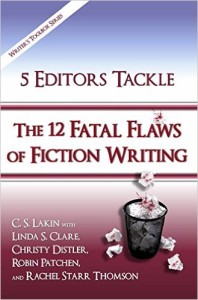So much of the time, novel writing feels like groping your way in the dark. As you write, you’re not sure if any of it will “work.” I think it’s helpful to occasionally dip into left brain for analytical tactics to find your way.
Writing Tip for Today: By breaking down your story into chunks, you can roughly gauge whether the structure of your novel adheres to a shape the reader can appreciate. Here are some ideas for analyzing a draft:
Twenty-Sixty-Twenty
One way to see if your story’s structure contains vital elements in the right proportions is to break it into three chunks. While following a three-act structure is good, knowing how much of the story to place in each of the acts can be tricky. If you are writing an 80,000 word novel for instance, the first twenty percent should introduce readers to the Main Character, the setting, the time period, whatever “Ordinary Time” happens before the “Inciting Incident and by the end of this section, the major problem or goal the MC is trying to solve or gain. That’s about 16,000 words, give or take. The first twenty percent corresponds with Act I, which feels logical.
The Big Middle
Next look for the largest section. Act II takes up sixty percent of your story–about 48,000 words of 80,000. Some call this “Rising Action,” others point out the fleshing out of the character’s arc–what she learns from, how he changes. This gives the character a chance to fail, to try again and again, to face complications ad reversals, all leading to the lowest point, what Stephen Cannell calls the “destruction of the hero’s plans.” All is lost at this point–or seems to be. By the end of Act II, readers should be asking themselves how the hero can ever overcome the problem.
The Last Bite
In your novel’s last twenty percent (about 16,000 words of 80,000), the BIG CLIMAX opens ACT III with a bang. In your climax scene, the hero must draw upon inner strength, tools or other items and rise up one last time to battle the PROBLEM and/or the ANTAGONIST. Your protagonist must solve the problem herself–no cavalry, gods or parents riding in to save her at the last minute. By allowing readers to cheer on your hero or heroine, you also answer questions raised in the early parts of the story. This twenty-sixty-twenty method won’t solve all novel problems. But it can give you an idea of whether or not your story’s structure will stand, and more importantly, whether readers can recognize and derive satisfaction from the shape. I often ask my students to analyze a favorite published novel to see how closely it follows the 20-60-20 formula. Try it and see how your work-in-progress holds up.
Your Turn: What ways work best for you in determining the shape of your novel?
Don’t forget! Pre-order our new writing resource, Five Editors Tackle the Twelve Fatal Flaws of Fiction Writing chock-full of great, easy-to-follow writing advice!







This was very helpful. I’m increasing the word count on a short story I wrote that had 3,600 words to 20,000 plus; a novella. This gives me a blueprint of where I need to add scenes, dialogue and all the other elements to shape my novella so that I am on right on target.
Sharon,
So glad I could help! Keep Writing!
Linda